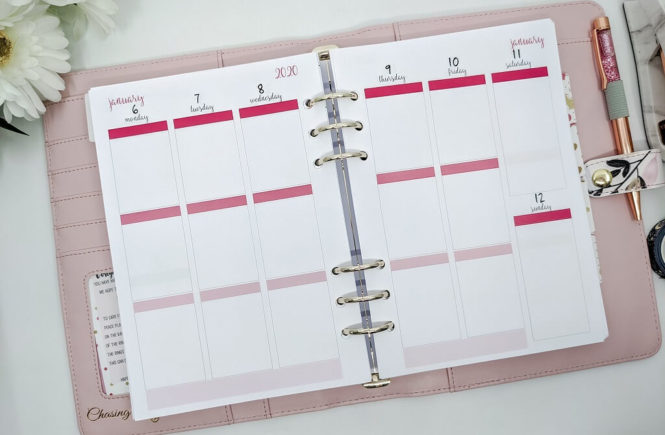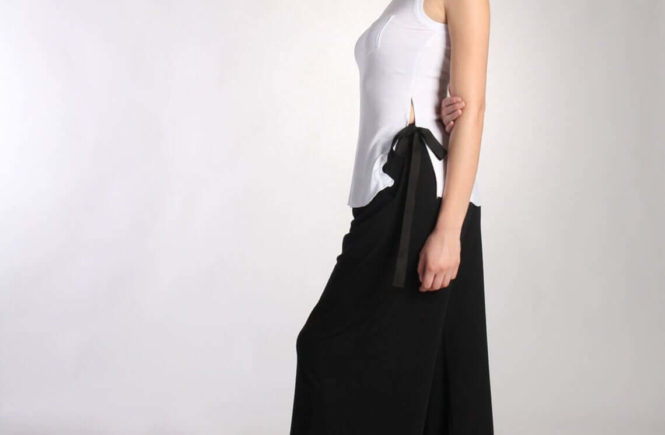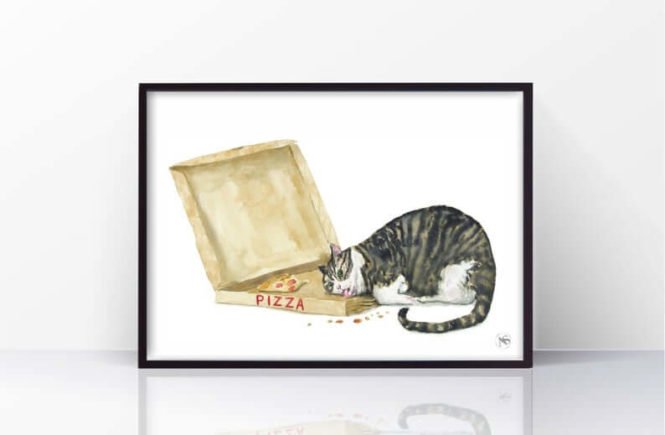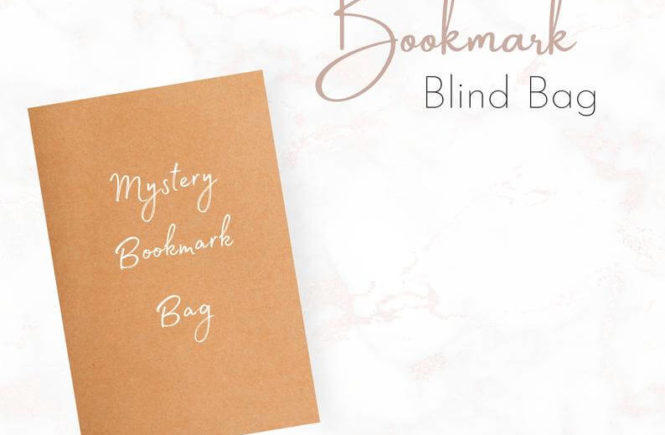[vc_row][vc_column][vc_message]
Niche : Personalized Design
Shop link : www.etsy.com/shop/chasingplannerpeace
Facebook : www.facebook.com/chasingplannerpeace
[/vc_message][vc_column_text]
Tell us something about yourself, how did you get started, do you consider yourself a crafter,maker,artist…
I began Chasing Planner Peace when I was pregnant with my third child. I was a member of the Australian Planner Community, a group of (mostly) women, who love using paper planners to stay organized and have a creative outlet. I began making planner inserts for my own planner (so basically refill pages for my Filofax and Kikki.K planners), and then decided I might pop some up on Etsy and see if anyone else wanted to buy them. When I started, I had basically no skills in graphic design, photography, or business at all. I was primarily making these products for my own use, and just sharing them online with other “planner addicts”. I’ve always wanted to run my own business, but when Chasing Planner Peace started, I did not think it would end up becoming a full-time career.
How did you discover Etsy? Did you have any previous experience in selling handmade products? Why did you start selling online?
I was already very familiar with Etsy as a place to find planner stickers, as well as other handmade items. Many other members of the planner community had Etsy stores selling planner stickers, which is what motivated me to put my planner inserts on the internet as well. I originally thought I would actually create bound planners and sell them, but it turned out there was far more interest in just buying the inserts (refill pages for ring planners like Filofax). I was hopeful I might make an extra $50 or $100 a week, and thought it was pretty simple for me to print out copies of the inserts I’d designed and post them off to people for a bit of extra pocket money. I put absolutely zero effort into a logo, photography, or researching postage options. I literally just snapped a picture of some planner inserts on my coffee table at 9 pm at night, did a quick logo in MS Paint (!!), and set up an Etsy store in about 30 minutes. While I probably would recommend people put in a little more effort than that when they start an Etsy store, it was great to start with really zero investment and grow slowly as I became more skilled and experienced in selling online. I can’t believe how much I have learned in so many different areas (graphic design, book-keeping, photography, social media, etc, over the past five years).
What products do you sell, what type of materials are used in your creations, how do you design your products, what makes your products stand out ?
We began selling planner inserts for ring planners. If you are familiar with Filofax-style ring planners, these are very popular, but because the paper quality and the design of the inserts that come with them are so bland and boring, people usually pull the “guts” out of them and refill them with much better quality inserts. When I first started, my unique selling point was definitely that the inserts I made were colorful and cheerful compared to plainer refills on the market. I also created “Erin Condren style” inserts, which were inserts in the same style as a popular USA brand of planners that most planner stickers are created to fit. Because my inserts had the same dimensions as Erin Condren planners, people could decorate them with the planner stickers widely available on Etsy. These days we also have our own line of ring planners manufactured for us, and sell a wide range of other stationery and planner products like washi tape, dividers, notepads, and sticky notes. We sell primarily through our independent website and Etsy ticks along in the background bringing in only around 20% of sales. Our unique selling point has moved from color and cheerful designs to the fact that we have the widest range of planner inserts in Australia. We now have inserts for things like the National Disability Insurance Scheme, finance planning, Afterpay trackers, and more. People really can build the planner of their dreams with our products by mixing and matching our planner covers, dividers, and inserts.
How was your experience in learning to craft, are you self-taught or did you have a mentor, how long did it take for you to be satisfied with your creations
I am 100% self-taught in terms of design, although my husband is an IT professional and has helped immensely with some of the tricky printer issues we’ve had. Printing off inserts sounds simple, but at our busy time we often print around 3000 pages a day – sometimes our printers misbehave and it’s really hard to figure out what’s gone wrong or how to fix them. I look back at the first designs I did and feel embarrassed at how amateur they look – but I guess people did buy them, so they did the job. I love that in this business I am constantly learning about how to create better inserts, design better products, and use overseas manufacturers to create products I am incapable of making myself (like our ring planners).
[/vc_column_text][/vc_column][/vc_row][vc_row][vc_column width=”1/3″][vc_single_image image=”100000545″ img_size=”737×737″ onclick=”link_image” css_animation=”appear” bb_tab_container=””][/vc_column][vc_column width=”1/3″][vc_single_image image=”100000544″ img_size=”737×737″ onclick=”link_image” css_animation=”appear” bb_tab_container=””][/vc_column][vc_column width=”1/3″][vc_single_image image=”100000543″ img_size=”737×737″ onclick=”link_image” css_animation=”appear” bb_tab_container=””][/vc_column][/vc_row][vc_row][vc_column][vc_column_text]
What was your original goal when you opened up an Etsy shop? What impacted your decision to start selling online? Do you consider online selling as a side-job, full-time job or extra income to pay for your hobby?
When I started my Etsy shop I really thought I might make an extra few dollars a week. However, I quickly became very busy filling orders every night and started to turn a profit almost immediately. At this stage, I thought if I could make $600 a week, which was how much I earned in the part-time job that I absolutely hated, I’d be very happy. After I’d been doing Etsy for around a year, I realized it could indeed become a full-time job, and I walked away from my part-time job soon after that. With no fallback income, I really laser-focused my attention on Etsy and our website, and sales have continued to grow every year since then. I now also employ two part-time workers, and my husband works part-time, which means my business is the main source of income for our family.
Did you have any fears or reservations before opening up your Etsy shop? Were you worried about profitability or product competitiveness? What are some concerns and questions you had before you got started? How did you overcome them?
I really didn’t give it much thought at all. It was quite a spontaneous decision to start an Etsy shop, and as I’d invested so little into it, if it failed, I really wasn’t at all worried. I really didn’t do much maths to work out how much I should charge for products. I made many mistakes, including under-charging for my products, taking on too many custom orders, and not packaging correctly, but I took them as learning opportunities.
How long did it take for you to get your first sale? Did you ever think you would make a lot of sales in the first year? What was the goal you were hoping for? How many sales an average you get per week?
My first sale came really quickly – within a couple of days! I think it came from someone within the planner community – I shared my shop on Facebook and this stimulated a couple of sales. Quickly I started to get quite a few orders from overseas. Within about a month, I was very busy. I was so slow to get orders out and had so many custom orders, that I was probably spending as much time on it (even more) than I am now. I really just wanted to hit that $600 a week profit. Although I had some $600 weeks in the beginning, it took me around 12 months to get that consistently. Now we do around 100 orders most weeks, although there are huge seasonal variations. March is always very quiet, and November/December is always crazy!
Do you have a job outside Etsy? If not, are you able to commit full-time to online selling? How does your typical day look like? How do you manage time?
Not any more! I do have three children which means my time is split between caring for them and working on the business, which can be incredibly stressful sometimes. My youngest started school this year so all three kids are out of the house Monday, Tuesday, Wednesday and I can really knuckle down and get work done during this time. I really need to time-block and manage my tasks. We’re so much more efficient at filling orders than I used to be, so Monday I have my employee come over and we fill orders, Tuesday is design day, and Wednesday is orders again. The rest of the week I do as much as I can while the kids watch TV or play outside, but it’s a real juggle.
How does your manufacturing process look like for e.g. your best selling product? Do you create products ahead of the orders? Do you customize your products, if so how? What are the tools that you are using in the manufacturing process?
We used to print every order as they came in, and also offer custom date ranges. This slowed us down so much! Now we have basically no customization options, only offering set date ranges. We bulk print around 40 or 50 of our best-selling products which makes filling orders much, much faster. We also, only recently, invested in an expensive guillotine, two paper drills, and upgraded our printer to something much faster and professional. I wish I’d invested in this equipment much earlier as it’s really made production much more efficient.
What is the biggest impact on the profitability of your shop? How expensive are the materials you use? How do you price your products?
To begin with, I didn’t charge enough for our items. I think this is a common mistake people make because they only consider the cost of the raw materials and not enough in terms of time, packaging, Etsy fees etc. We charge as much for our products as we imagine people will be comfortable paying – for some items, like inserts, there’s a healthy profit margin on them. For other items, like our ring planners, we don’t make a lot of profit. We’ve also really looked at our best-sellers and the items we had that haven’t sold well and focused our efforts on items we know we will sell a lot of. For example, there’s not a lot of point designing and dating inserts that only sell a handful of copies every year. I would say, don’t be too focused on profit the first year or two, just focus on getting sales, and then you can really look at how to become more efficient and create items with a higher profit margin. I’m pretty sure I worked for far less than minimum wage for the first two years.
What inspires you when you’re creating? How do you get ideas for new products? What are some methods or tools you use to get creative?
I will never run out of ideas. If only I had all the time to design everything I wanted to! We have a very active and engaged Facebook group and if ever I wanted inspiration, I would simply ask in there as our customers always have many requests for new products. We also run a bi-monthly subscription box on our website and this forces me to come up with new products at least every two months. Sometimes when orders are going crazy I get no time to design new products, so having the subscription box means that new products HAVE to be released, at least every two months. There are so many different things you can use a planner for. People think normally of writing in appointments, but you can use them to organize every facet of your life, as well as a creative outlet with stickers and decorating. The sky is really the limit.
Do you ship your product internationally? How do you handle postage pricing? What is the average time it takes from the order to the delivery? Do you use free shipping? If so, why? How do you package your products?
Yes, we began shipping internationally straight away. I used to send everything as untracked letters but this caused a lot of issues as mail can take so long to reach the US. We now use DHL eCommerce which is a nice balance between offering tracking and not being too expensive. Our turnaround time from receiving orders to posting them is generally about a week, although I have a two-week window set on Etsy just as a safety net. I do not use free shipping except on orders over $99. I actually think Etsy’s push for sellers to offer free shipping on everything isn’t very well thought out. Finally, after 5 years in business, we’ve ordered some branded boxes to ship our planners in, which I am very excited about as I feel it will really make us look more professional.
[/vc_column_text][/vc_column][/vc_row][vc_row][vc_column width=”1/3″][vc_single_image image=”100000542″ img_size=”737×737″ onclick=”link_image” css_animation=”appear” bb_tab_container=””][/vc_column][vc_column width=”1/3″][vc_single_image image=”100000541″ img_size=”737×737″ onclick=”link_image” css_animation=”appear” bb_tab_container=””][/vc_column][vc_column width=”1/3″][vc_single_image image=”100000540″ img_size=”737×737″ onclick=”link_image” css_animation=”appear” bb_tab_container=””][/vc_column][/vc_row][vc_row][vc_column][vc_column_text]
Are you worried about competitors? Does it impact your business in any way? If there are a lot of similar products, how do you make your own stand out?
Of course, I have competitors, although I’m quite lucky in that I only have a few competitors and not hundreds like items such as planner stickers, candles, or jewelry. Sometimes seeing what my competitors are doing is a motivation for me to keep my focus on growing my business and providing a great service, but I honestly believe if you are worrying too much about what everyone else is doing, you won’t have the energy to focus on your own business. I always tell my kids to “paddle your own canoe” and I feel the same is true in business. I’ve seen some sticker makers who perhaps don’t have a particularly unique or outstanding product be incredibly successful just by keeping their “head down, bum up” on their own business and keep working on it. I feel our business is already a stand-out simply as we have such a huge variety of products that no other planner business really matters.
How do you deal with disputes or bad ratings/feedback? How do you manage presale and post sale communication and customer satisfaction?
I used to get very upset by angry customers or bad reviews. It would really ruin my day. I’ve since learned that often the customer is having a bad day themselves and wants to lash out, or maybe they are the sort of person who is easily dissatisfied. We do make mistakes every week – someone gets a different product from what they ordered, etc. I always replace those products immediately. Good customer service is really absolutely critical if you are running a small business, so even if the customer is angry or upset I try really hard to fix the situation for them. We have email flows set up for our website buyers that take care of pre and post-sale communication. On Etsy, it’s a little more difficult to really make sure customers have read the listing details, etc, but we try to be open about shipping times, etc wherever we can. I remember that over 99% of my customers give me good feedback, and you’ll never make every single person happy.
Has selling on Etsy changed your life in any way? If so, how? Did you ever think you would get this far with your shop? Have you ever been stressed about dealing with customers and manufacturing products? How did you deal with that?
I am now living my dream life! I get to spend every day working on my own business, listening to podcasts or watching Netflix. I have amazing employees and my husband gets to stay home most of the week. That’s not to say it isn’t incredibly stressful. I have probably only got to zero open orders two or three times in five years, and most of the time I have more than 50 orders open. That is a constant weight in the back of my mind, and I feel in the mornings I jump out of bed in a mix of excitement and just stress that I have so much to do! Working at home with three kids is really, really difficult – something that people have only begun to realize since COVID-19 has meant a lot of parents are now doing the work at a home thing with kids. Some weeks we don’t make much profit and it can be hard to draw a wage. I don’t have any secret to dealing with the stress, except I do try to go for a walk every day for half an hour. That at least gets me away from orders, from housework, and gets some endorphins flowing.
How important is social media for your shop? What are some common tactics you use to promote your products? Do you spend money on ads outside of Etsy? How do you generate excitement/hype around your products?
Almost all our sales on our website have come through Facebook. Etsy is a little easier as it brings traffic to your store, however social media has been absolutely critical in building our customer base. I wish I had started a Facebook page, VIP group, and Instagram at the very beginning of my business. To promote our products I post in relevant groups (eg. planner groups, Afterpay groups), and I do run ads on Facebook. Our VIP group is an excellent, fun little group and I keep our VIPs informed with everything happening in the shop, including letting them vote on new planner designs.
What are some things you don’t like about Etsy? If you could talk to the CEO of Etsy what recommendations would you tell him to improve sellers and customer satisfaction?
When I started, Etsy was a reasonably inexpensive selling platform. Now fees take up a huge percentage of profits without anything extra to show for it. I sell using Afterpay on my website and that dramatically increases my conversions, and Afterpay fees are around half of what Etsy is. I also feel Etsy is geared a lot towards US sellers. There is so much pressure to offer free shipping to the US, etc, that it really doesn’t make sense for Australian sellers. The new off-site ads thing is also incredibly frustrating. I already spend money on off-site ads that I want people to go to my website, not Etsy. Also, Etsy is notorious for siding with the buyer if there is a case. I found this very stressful when I sold exclusively on Etsy – every time a customer raised a case about a missing item, I would be worried Etsy would one day shut my shop down.
What are some things you did to set your shop for success on Etsy? What is one lesson you learned the hard way?
So so many lessons! Mostly around taking terrible photos, to begin with – I’ve retaken most of my photos around five times, as I keep getting better at them. I also started making my inserts in Publisher, when it would have been better to use proper design software early on. I’ve learned a lot about postage, book-keeping, graphic design, customer service, email marketing, social media, etc. I wouldn’t say I’ve learned any lessons the hard way, but I’ve learned a huge amount about how to run a better shop over the past few years. I’m now really proud of how professional our shop is and the top quality of our products.
What piece of advice would you give to new or established sellers or those considering selling on Etsy? How can they avoid beginner’s mistakes?
Progress is better than perfection. Don’t worry about making mistakes, just jump in and go for it. I see a lot of people who spend ages creating the perfect logo, perfect packaging, and social media pages and don’t ever get started. Take a photo and pop your listing up and see what happens. You’ll never have a perfect shop the first time round – chances are that photo you’ve taken will need to be re-taken in a few month’s time.
[/vc_column_text][/vc_column][/vc_row][vc_row][vc_column][/vc_column][/vc_row]




